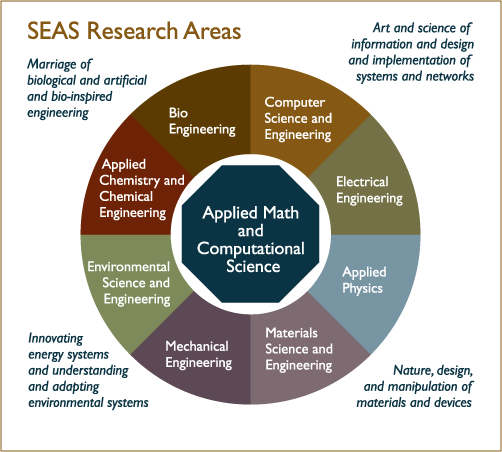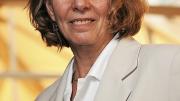Cherry A. Murray, the physicist who became its dean on July 1, already knows her aspirations for Harvard’s young School of Engineering and Applied Sciences (SEAS): to reach “critical mass” in research areas that will make an impact on twenty-first-century problems, and to be recognized among peers as a world-class institution.
Though small, SEAS is already ranked first when it comes to citations per paper, and Murray judges the research areas in which it is now engaged (see graphic) “an excellent, coherent set of synergistic disciplines.” Now the new dean—currently president of the American Physical Society and formerly a senior vice president for physical sciences and wireless research at Bell Laboratories and then an executive at Lawrence Livermore National Laboratory—has embarked on a strategic review that by next summer will produce a 10-year hiring plan, a development plan, and a space plan to expand SEAS’s capacity and influence.
The three plans are closely connected. The school needs to hire 50 more faculty members during the next decade—roughly five per year, says Murray—in order to achieve her first goal. Task forces in each research area will define their own “critical-mass” benchmark, but to Murray it means “breaking into the top 10” among engineering schools (one recent survey ranked Harvard at 19, up from 24 a year ago), having enough people to support “an excellent undergraduate concentration,” and running a “robust research program that attracts people.” The school’s development and space plans will need to be consistent with that hiring schedule. In the short term, she says, “enhancements of space will tide us over,” but eventually the school will need to raise money for a building. Murray hopes it will be located in Cambridge to allow engineering to remain close to related Faculty of Arts and Sciences (FAS) departments, facilitating collaboration and the development of new undergraduate and graduate programs.

The planning process charges eight task forces with answering a range of questions: Should Harvard have an undergraduate or graduate concentration in this area in 10 years? What sort of knowledge should all students have acquired by the time they graduate? Given Harvard’s resources, what is SEAS’s niche? What gaps need to be filled? What synergies exist with other areas?
Synergies are critical to the school’s success even now. “If you add up all the faculty who self-identify with each research area, the total number, 130, is much larger than the actual full-time-equivalent number of our faculty, which is about 70,” Murray points out. “For example, applied chemistry, bioengineering, and computer science are completely synergistic.” To ensure the continuity of this approach, she plans “adjacency hiring” that will balance the disciplines (which are arranged in logical order by how useful each is to the discipline nearest it in the diagram above).
By leveraging its faculty in this way, and without aspiring to be an MIT (where Murray earned her undergraduate and Ph.D. degrees), SEAS can nevertheless excel in certain niches within 10 years, she believes: “For example, with a world-class medical school and all of the hospitals, pharma, and biotech around here, we need to do bioengineering.” (A Ph.D. program in that field is in the works.) For now though, “All the areas are too small.”
As the school grows, Murray intends to guard its unique administrative structure, in which area associate deans report directly to her (there are no departments), preserving its open and collaborative research environment. As for her own style, she says, “I believe in management as supporting infrastructure, so that is what I call it: ‘enabling support.’ Associate deans are actually enabling the faculty to do their work.”
SEAS, a financially and administratively independent part of FAS, now relies on its own endowment for almost 50 percent of its annual income. Murray would like to shrink that number to 35 percent or so; she says that will require more income from sponsored research and from interactions with industry—goals more readily achievable with a larger faculty.
Eventually Murray would like to teach and to collaborate on research in soft condensed matter, nanobiology, or nanotechnology, but for now, the school itself is her primary focus. “SEAS is growing and it really needs a lot of attention,” she says straightforwardly. “I’m enthusiastic about that.”









